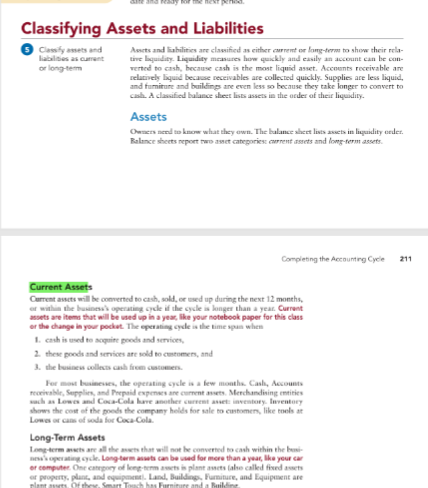Classify assets and liabilities as current or long-term.

Understand the Problem
The question is asking how to classify assets and liabilities based on their liquidity, specifically distinguishing between current and long-term classifications. This involves understanding financial statements and the nature of various assets.
Answer
Current assets/liabilities: one year; long-term assets/liabilities: more than one year.
Current assets will be converted to cash or used up within one year, while long-term assets last longer. Current liabilities are due within a year, and long-term liabilities take longer to settle.
Answer for screen readers
Current assets will be converted to cash or used up within one year, while long-term assets last longer. Current liabilities are due within a year, and long-term liabilities take longer to settle.
More Information
Understanding the classification helps accurately reflect a company's financial health and liquidity.
Tips
Common mistakes include misclassifying assets or liabilities due to lack of information on their expected use or settlement terms.
Sources
- OER Pressbooks: Current and Noncurrent Assets and Liabilities - oer.pressbooks.pub
AI-generated content may contain errors. Please verify critical information